Own in Phuket, Live Near Paradise
Ask any local and they’ll tell you that Phang Nga Bay is the ultimate day trip from Phuket. Towering limestone cliffs, emerald-green waters, hidden lagoons, sea caves, and floating villages make it one of the most breathtaking natural wonders in all of Southeast Asia.
But for those who own property in Phuket, it’s not a once-in-a-lifetime adventure , it’s a lifestyle perk.
Living in Phuket means you can access Phang Nga Bay as often as you like. That’s one of the many reasons why owning a home here is about more than just property, it’s about everyday access to the extraordinary.
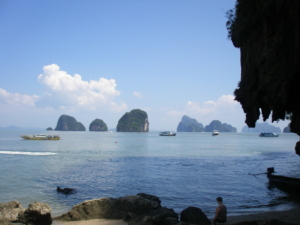
A Natural Wonderland Right on Your Doorstep
Phang Nga Bay is located between the mainland provinces of Phang Nga and Krabi, with easy access from Phuket’s east coast marinas, like Ao Po Grand Marina or Royal Phuket Marina. The entire bay is protected by Ao Phang Nga National Park, preserving its untouched beauty and ecological significance.
You’ll explore:
-
Towering karsts rising straight from the sea
-
Secret caves and hongs (collapsed cave lagoons)
-
Limestone islands with hidden beaches
-
Wildlife, mangroves, and crystal-clear shallows
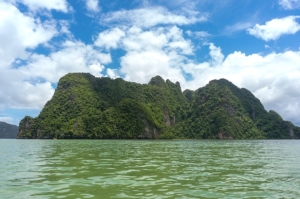
Day Trip Options from Phuket
Phuket residents have several options when planning a day out in Phang Nga Bay:
-
Speedboat tours to James Bond Island & Koh Panyee
-
Sea canoeing into caves and lagoons
-
Private long-tail or yacht charters
-
Sunset cruises with onboard dining
-
Combined day trips including Krabi or Hong Islands
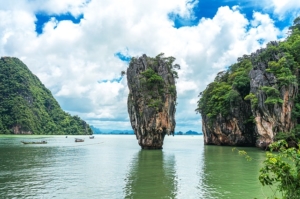
Stop at the Floating Muslim Village
A highlight for many is visiting Koh Panyee, the floating Muslim village built on stilts at the base of a limestone cliff. It’s famous for its seafood restaurants, local crafts, and the floating football pitch built by village kids.
Read more about the floating village here
Why This Matters to Phuket Property Buyers
Whether you’ve bought in Ao Po, Yamu, Chalong, Rawai, or Kathu, living in Phuket gives you seamless access to this natural paradise. Most marinas are within 30–45 minutes of residential areas, making spontaneous weekend escapes easy.
This kind of natural lifestyle is exactly why so many international buyers are choosing Phuket over other resort destinations.
Explore Phuket villas for sale
Browse Phuket condos near the coast
Why Just Visit When You Could Live Here?
Phang Nga Bay is one of those places that steals your heart. But what makes it even more special is being able to return again and again, not as a tourist, but as a resident.
That’s the magic of Phuket living.
Frequently Asked Questions About Phang Nga Bay
How far is Phang Nga Bay from Phuket?
Phang Nga Bay lies just northeast of Phuket and is easily accessible by boat. Most tours depart from Ao Po Grand Marina, Royal Phuket Marina, or Chalong Pier, with travel time ranging from 20 to 60 minutes depending on the destination within the bay.
What is the best way to visit Phang Nga Bay from Phuket?
Phuket property owners often opt for:
-
Private speedboat or long-tail boat charters
-
Group tours from local marinas
-
Luxury yacht cruises or sunset dinner cruises
Many also enjoy sea kayaking experiences that explore caves and hidden lagoons.
Is Phang Nga Bay suitable for families with children?
Yes, the bay is calm, scenic, and ideal for all ages. Many tours include child-friendly activities like beach stops, gentle kayaking, and floating restaurants. It’s a popular choice for families living in Phuket.
Do Phuket residents get better access to the bay?
Absolutely. Phuket property owners enjoy easy, flexible access to the bay year-round, without needing to rush. Whether it’s a spontaneous half-day paddle or a weekend yacht trip, living in Phuket means Phang Nga Bay becomes part of your lifestyle.
Related Articles:
Exploring the Phang Nga Caves in a Sea Canoe
James Bond Island: A Timeless Day Trip for Phuket Residents
What’s the best time of year to visit Phang Nga Bay?
The bay is beautiful year-round thanks to its sheltered geography, but the cool dry season (November to March) is ideal for smooth seas and crystal-clear views. Even in the green season, calm mornings are common.
Get in Touch | Call Us Now For More Information About Buying Phuket Property On: +66 9484 11918

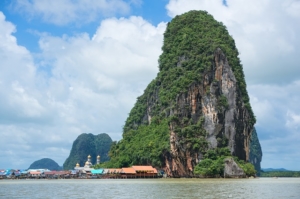

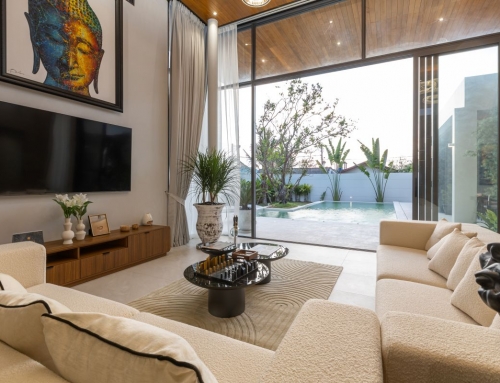
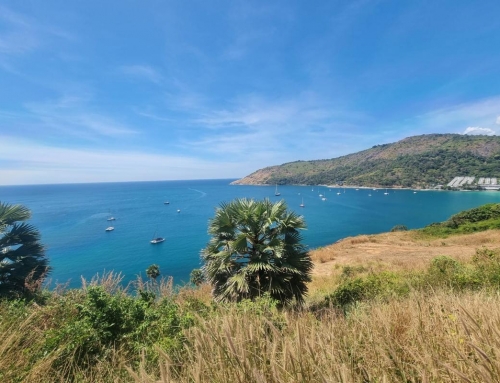

Social Contact